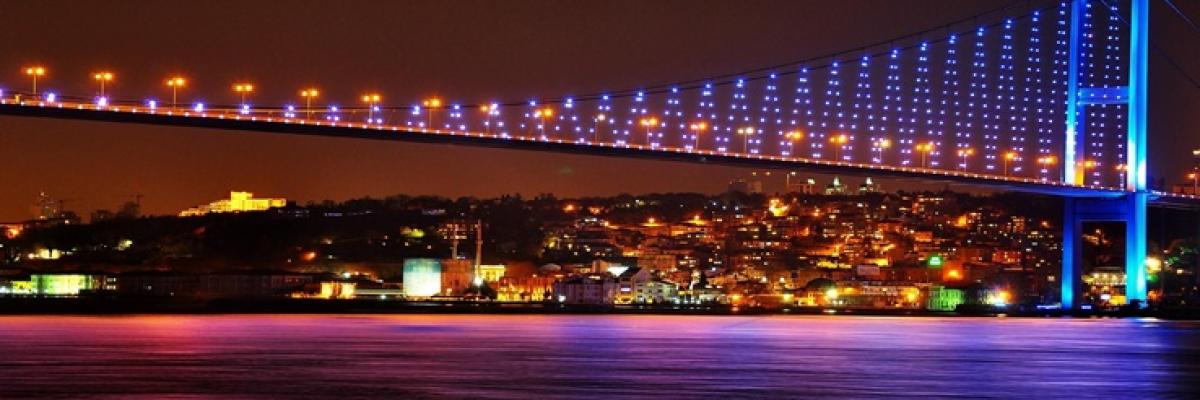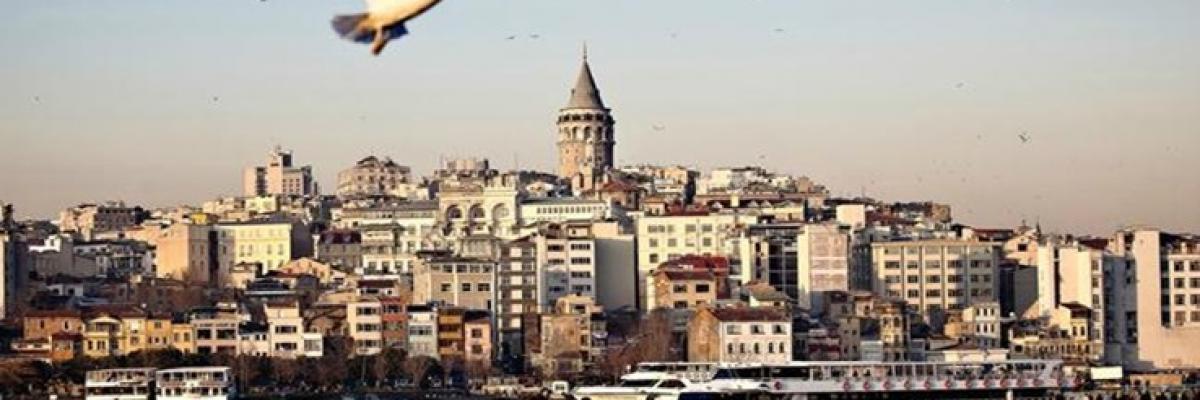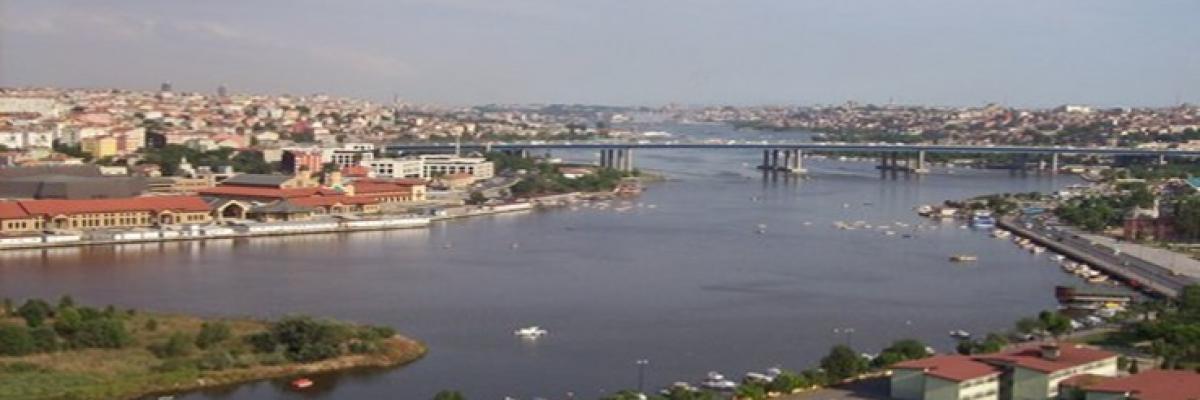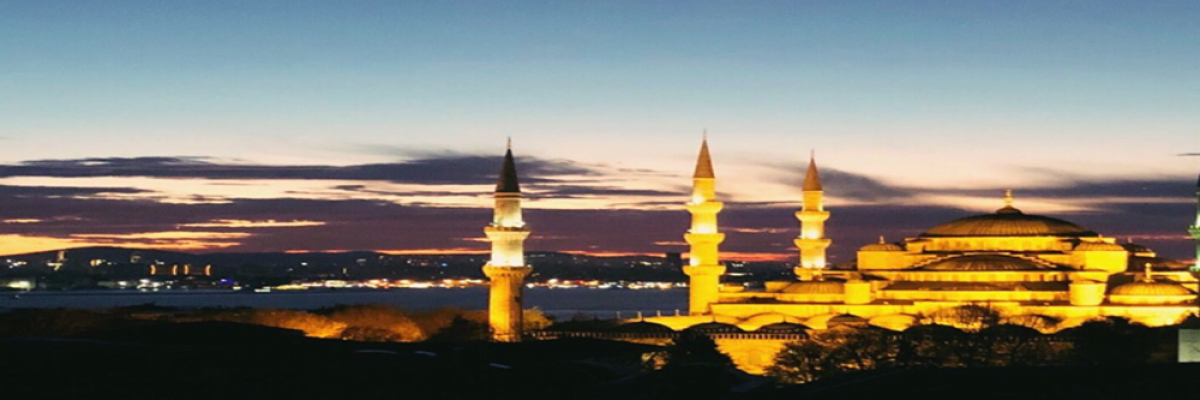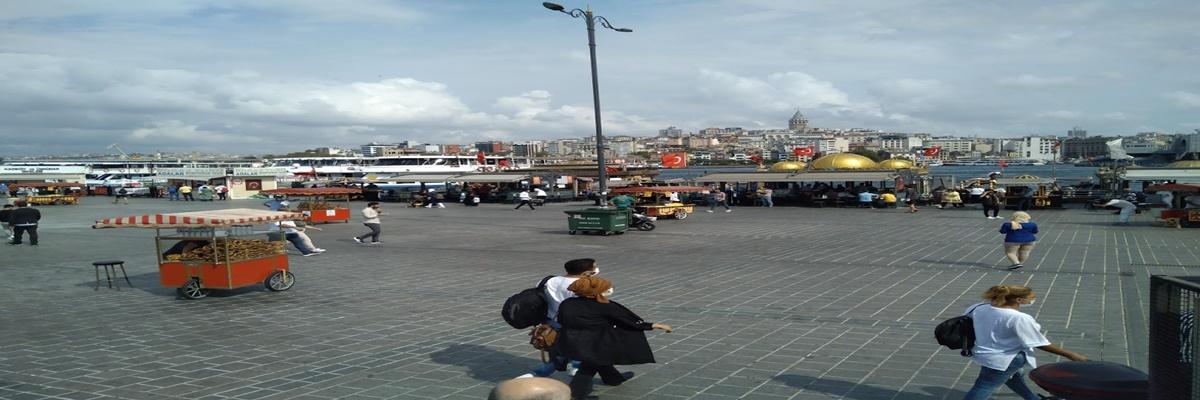Botswana
BOTSWANA
General Information
Located in the south of the African continent, Botswana is a landlocked country that is completely landlocked. Attracting attention with its natural life and geographical formations rather than city centers, Botswana is known as the hidden paradise of Africa.
Its capital is Gaborone. Almost half of the population lives in the capital Gabarone.
The official language of Botswana is English and the national language is Tswana. Although English is the official language, only 25% of the population speaks it. The rest speak languages specific to their tribes. Botswana pula is used as currency.
Turkey is the same as the local time clock.
Botswana is among the countries do not need visas from Turkey. You can travel to this country without a visa. However, you need a visa for the country's import from Turkey will make no direct flights.
Location
Botswana is located in the south of the African continent. Its neighbors are the Republic of South Africa in the south and south east, Namibia in the west and northwest, and Zimbabwe in the northeast and east.
Most Visited Cities
Gaborone, Mahogany, Francistown
Climate / Weather
Botswana has a rule and semi-desert climate. Temperatures are very high, with an average of 35 degrees in summer and 20 degrees in winter. In this country, the summer months are between October and March and the winter months are between April and September.

When to Go?
Botswana can be visited in all seasons. In April, colorful festivals are organized in the country. If you arrange your trip to the festival time, you can spend moments full of music, dance, culture and art.
Country Cuisine / What to Eat What to Drink?
Local tastes are more prominent in Botswana. Porridge, fruit puree and salty meat porridge made from coarse corn flour are the main regional flavors.
Official Name: Republic of Botswana
Management Format: Republic
Independence Date: September 30, 1966 (from England)
Capital: Gaborone (250 thousand)
Area: 581,730 km2
Population: 2.3 million (2018)
Ethnic Distribution of the Population: 79% Tsvana (Setsvana), 11% Kalanga, 3% Basarva, 7% other
Climate: Arid, semi-desert climate
Geographical Location: Botswana in South Africa is surrounded by the Republic of South Africa to the south and southeast, Namibia to the west and northwest, and Zimbabwe to the northeast and east. The country has no sea coast.
Neighbors: Republic of South Africa, Namibia, Zimbabwe
Language: Setsvana, Kalanga, Sekgalagadi, English
Religion: 49% Local beliefs, 49% Christianity, 2% Islam
Literacy Rate: 88.5% (2015)
National Income: $ 16.7 billion (IMF 2017)
Average National Income Per Capita: $ 7,877 (IMF 2017)
Currency: Pula
Major Trade Partners: Belgium, India, Republic of South Africa, Singapore, Hong Kong, Namibia, Canada
Export Products: Diamond, cable, baking soda, beef, gold, salt
Import Products: Diamond, petroleum oils, trucks, passenger cars, pharmaceuticals, telephones, spare parts, rubber, tires, cement

Country History
Information on the history of Botswana is very limited. It is estimated that the first inhabitants of the region were Tsavanas from the north and engaged in animal husbandry, and the name of the country comes from here.
Botswana has been dealing with the colonial practices of Britain in the continent since the beginning of the 19th century, and Britain, who won the struggle in the region, declared that it took the place under the name of Bechuanaland in 1885. Botswana, which remained a British colony since this date, declared its independence in 1966.
Seretse Khama, who became the first president of Botswana after gaining its independence, ruled the country in 1966-1980, later became the president of the state, respectively: Quett Masire (1980-1998), Festus Mogae (1998-2008), son of first president Seretse Khama Khama (2008-2018) is seated. With the expiration of Khama's term of office, Mokgweetsi Masisi took office in April 2018.
In Botswana, which has been politically stable since its independence, all heads of state have been elected and they are all representatives of the Botswana Democratic Party.
Political Structure
Botswana is one of the most politically stable countries in the African continent. There has been no serious political crisis or war since 1966, when the country was declared independence.
Botswana, where regular elections have been held since 1966, is governed by a presidential system. The ruling Democratic Party of Botswana has been the head of state administration since independence was achieved. The Parliament consists of 63 members. Executive power belongs to the head of state, and the council's control and control possibilities over the executive are limited.
The country consists of nine administrative divisions. The population is rather concentrated in the eastern parts and the city with the highest population is the capital city of Gaborone. While the four major tribes in Botswana make up 95% of the population, there is no conflict environment between ethnic or religious elements in the country. Setsvana and English are the two official languages in the country, spoken by Tswans, who make up the majority of the population. The country is also a member of the Commonwealth of Nations.
Economical situation
Strengthening its economy thanks to its rich diamond reserves, Botswana has succeeded in being among the countries of the continent with a relatively good level with the development and prosperity it has achieved in recent years. The country has achieved a steady growth in the half century since independence was gained in 1966 and thus became one of the leading countries of Sub-Saharan Africa in terms of per capita national income. Botswana is also an attractive country for foreign investors due to its potential, stability, competitive economic conditions and English being the official language.
In line with this general view, Botswana is one of the rare countries in the African continent that can achieve balanced budget rates in foreign trade. In Botswana, which has a foreign trade volume of 10-15 billion dollars in the last 10 years covering the years 2008-2017, import-export levels are very close to each other. Finally, in 2017, the foreign trade volume was 9.991 billion dollars, of which 4.893 billion dollars in exports and 5.097 billion dollars in imports.
In Botswana, whose economy is based on diamond mining, 42% of the national income is obtained from the mining sector. However, it is known that global companies with Jewish capital stand out in the operation of diamond mines in Botswana, as in other African countries, the Republic of South Africa and Angola.
Interest in other mines in the country, especially coal, is also increasing. There are copper, uranium, coal, nickel, salt and silver mines in the country besides diamonds. Botswana is expected to become prominent in copper and uranium production in the coming years.
Apart from mining, the second area that carries the country's economy is the service sector. In addition, the country has an important potential in terms of tourism with its natural areas. The share of sectors such as production, agriculture and livestock in the economy is extremely limited.
Despite its highly favorable economic structure compared to continental countries, poverty and unemployment rates are still quite high in the country. Besides, the rise in the income level has increased the inequality in the income level. According to the report titled "Trends of Income Injustice in Sub-Saharan Africa" published by the UN Development Program in September 2017, Botswana, along with the Republic of South Africa and Namibia, is one of the three countries with the highest income distribution in the continent.
Relations with Turkey
Despite the considerable distance that has come in its relations with Turkey and African countries in recent years, relations between Turkey and Botswana are still in the initial level. This is due to the weakness of historical and cultural ties as well as the geographical distance between the two countries.
Diplomatic relations between the two countries first established in 1981, Turkey's ambassador to Botswana was opened in 2014. Botswana does not have an embassy in our country yet. Similarly, no visit at the level of heads of state has taken place between the two countries until now.
The trade volume between the two countries confirms the weak relations between the two countries. The trade volume, which did not reach half a million dollars in the early 2000s, has been around 2 million dollars in recent years. Almost all of the figures in question are realized in the form of exports from Turkey to Botswana. The main products exported from Turkey to Botswana; air vehicles, carpet, iron and steel stoves and stoves and hygienic paper products.
Status of Muslims
Despite a population of 2.5 million may be considered wide area to find in Botswana, the number of Muslims live in the very few to find 50 thousand. It can be said that Muslims living in the country do not encounter any restrictions in terms of their religious life.
The region became acquainted with Islam through short-term visits by Muslim Arab traders who came to the East African shores to the interior, but it did not turn into a mass tendency. The spread of Islam in Botswana, albeit on a partial scale, occurred at the beginning of the 19th century through Indian Muslims brought from India to South Africa for employment. The arrival of Muslims to settle in this region and do business only took place towards the end of the 19th century.
The intention of Muslims to settle in the region was not welcomed by the British colonial rule, and a small number of Muslim communities faced the harsh attitude of the British administration. The first mosque in Botswana, which won independence was opened for worship in 1966 and has exceeded the number of mosques in 20 countries today. There is also a religious school in Botswana.
In the post-independence period, the Muslims in the country attained a much more comfortable environment in all respects and had the opportunity to trade all over the country. This enabled the people of Botswana to meet with Islam, as well as the Indian Muslims who came to the region later. On the other hand, there is a live notification environment in the country.

Places to See in Botswana
Moremi Reserve
One of the best wildlife reserves in Africa, the lotus-covered lagoons and forests of Moremi Reserve are a paradise on earth for countless animal and bird species. Moremi, where you can encounter elephants, buffaloes, lions, tigers and cheetahs, is also famous for its thousands of birds. The best months to visit are June and October.
Chobe National Park
Chobe National Park is perhaps the most famous national park on earth. It is a huge natural zoo with hundreds of living species. The endangered species, thousands of heron birds, elephants among the biggest in Africa are the inhabitants of Chobe National Park. The best months to visit the park are January and February. October is the hottest month. Get ready to watch incredible sunsets over the Chobe River.
Okavango Delta
The Okavango Delta, born in Angola, is connected to the Okavango River and covers one third of the country. This delta, which gives life to all bird and wild animal flocks in the region, is home to hundreds of thousands of tiny tropical islands in winter. this delta between May and November months to be seen, in the enchanting beauty of forests, palm trees, lotus and papyrus plants and favorite of nature lovers with wild animals.
Kalahari Reserve
The Kalahari Reserve, the largest wildlife reserve in the world, is home to a large number of leopards, giraffes, lions, hyenas and cheetahs. This is the only place where the black-maned Kalahari lion can be seen. This region, which has wide plains, valleys and salts, has few puddles on it, so you can find animals on the edges of these deposits.

Kgalagadi Cross Border Park
The Kgalagadi Cross-Border Park, adorned with undulating red earth mounds, combines South Africa's Kalahari Gemsbok National Park with Botswana's Gemsbok National Park. You can see many animal species such as black-maned lions, cheetah, leopard, wild dog, ox fish, and South African antelope in the semi-desert park.
Gaborone
Gaborone is the capital city of Botswana and the country's largest city with a population of approximately 208,000. It is a modern African city located on the banks of the Notwane River, approximately 15 km from the border of the Republic of South Africa. Many tourists flock here throughout the year. There are many natural beauty areas and historical buildings to be visited here.
If you happen to pass here, you can visit Gaborone Dam, Gaborone Wildlife Park, Kgale Hill, Mokolodi Wildlife Park, Somarelang Tikologo Ecology Park, Botswana Parliament Building and Khama Monument, Orapa House, St. Don't come back without visiting attractions such as Claire Lion Park, Botswana National Museum and Botswana Art Gallery. It is one of the first cities to come to mind when it comes to safari in Africa.
Mansion
Kasane, located in the far north of the country, is an important city established on the southern bank of the Chobe River. Kasane is located at the intersection of four countries such as Botswana, Namibia, Zimbabwe and Zambia.
For this reason, it has an important place throughout history. Approximately 9 thousand people live here. Many tourists come here throughout the year. Safari tours and Chobe national park attract tourists here. Apart from this, there are many natural beauty areas. It is one of the most visited cities in the country.
Mahogany
Located in the northern part of the country, Maun is a city founded in 1915 by the Batawana Tribe. This place is known as the tourism capital of Botswana. When it comes to mahogany, tourism comes to mind first. Because this place has been determined as the starting point of safari tours. Also on the border of the city is the Okavango Delta, the world's largest inner delta.
Here you can have the chance to see the wildlife in all its nakedness. Approximately 58 thousand people live in the city. The roads of the city are built in a very modern style. Again, there are accommodation and entertainment places in the city where tourists can feel comfortable. I think it is one of the cities that must be visited in Africa.
Francistown
Located in the east of the country, Francistown is the country's second largest city with a population of over 100 thousand. There are many historical buildings and natural beauty areas to be visited here.
If you happen to be in this country, definitely come to this city and discover its natural beauties. You can also buy local souvenirs. The city is located 450 km north of the capital.
Nxai Pan National Park
Nxai Pan National Park, located in the northeast of the country, is an important park established in 1992 on an area of 2,578 km². There are many wild animal species here.
Again, there are many plant species. You can come here and visit many new animals in their natural habitats. The best time to come here is from November to April.
Botswana
Population: 2,303,820
Capital: Gaborone
Official Languages: English, Tswana
Currency: Botswana pula
Continent: Africa
Founding Date: September 30, 1966
Important Cities: Gaborone, Maun, Francistown, Kasane
Time Difference: Turkey is the same as the local time clock.
Visa Status: Botswana is among the countries do not need visas from Turkey. However, since there is no direct flight, you should be careful about whether the country you are going to is without a visa.
When to Go? : Since the country of Botswana has an arid and semi-desert climate, the best dates to visit the country are between April and September.
